Alberto Nisman, the late special prosecutor tasked with probing and uncovering the truth behind Argentina's worst-ever terrorist attack, died four years ago.
In 2004, Nisman was tasked with investigating the 1994 bombing of the AMIA Jewish community centre by Nestór Kirchner. In 2006, with a fellow prosecutor, he accused the government of Iran of directing the terror attack and the Hezbollah militia of carrying it out.
Some nine years later, however, before his death, he was finalising the details of a presentation before Congress. Before Argentina's lawmakers, he intended to detail his allegations against Cristina Fernández de Kirchner, accusing the then-president and other officials in administration of seeking to cover-up the perpetrators of the bombing with the help of the controversial Memorandum of Understanding the government had signed with Iran.
According to Nisman, Fernández de Kirchner and other members of her cabinet including the late Héctor Timerman, then-foreign minister, had agreed to create conditions that would guarantee immunity for Iranian officials involved in planning the AMIA bombing in exchange for the trade of oil and grains.
In a development that would shock the nation, Nisman's lifeless body was discovered just hours before the scheduled session in Congress was due to take place. Inside his apartment at a high-rise building in the capital, the late prosecutor was found dead of a gunshot wound to the right side of his head.
How did the special prosecutor spend his last hours alive? Here is a timeline of the weekend’s occurrences leading up to Nisman’s murder.
Friday, January 16
Alberto Nisman began his early morning compiling evidence for his case. At midday, the prosecutor sat at a reserved table at Itmae, a sushi restaurant he favoured in the Buenos Aires City neighborhood of Puerto Madero. He indulged in some of his favourite food from the restaurant –– salmon sashimi, bluefin tuna sashimi, a 'New York roll' of salmon and avocado and shrimp nigiri.
Following his lunch, Nisman returned to his high-rise building to receive Soledad Castro, one of his personal secretaries who also played a pivotal role at the AMIA Prosecutor’s Office. Castro brought key documents regarding the upcoming presentation along with her. They were joined by Claudio Rabinovich, a lawyer hired by Nisman to aid him in the case.
Throughout the remainder of the afternoon, the AMIA special prosecutor compiled evidence, made a total of 12 phone calls, and communicated with journalists –– who were known to be eager for further details regarding his upcoming presentation.
Saturday, January 17
On Saturday morning, Nisman called on Rubén Benítez, reportedly seeking advice on how he could obtain a gun, fearing for his safety. Benítez was part of Nisman’s security attaché. Throughout the day he also communicated with various journalists.
At 2.25pm, Nisman dialled up Diego Lagomarsino, his IT specialist, and requested they meet at his apartment. Upon his arrival, Nisman asked Lagomarsino if he owned a handgun and if he could borrow it. Lagomarsino, who said yes, agreed and returned to his home to retrieve a pistol.
Throughout the course of the evening, Nisman regularly followed up enquiries with journalists and colleagues, including lawmaker Patricia Bullrich and Delegación de Asociaciones Israelitas Argentinas (DAID) Vice-President Waldo Wolff.
At 7.02pm, Nisman called Lagomarsino’s phone number again to ask if he'd had any luck in finding a gun. At 7.52pm, Lagomarsino reappeared at Nisman’s apartment, alongside with one of the prosecutor's bodyguards, who was picking up an envelope at Nisman's request.
Lagomarsino taught the special prosecutor how to handle the Bersa .22-calibre pistol and left it in Nisman’s possession. The Le Parc apartment building's surveillance system recorded footage of Lagomarsino exiting the building.
Nisman’s last conversation occurred at 8.37pm when he spoke with Infobae journalist Laureano Pérez Izquierdo.
Sunday, January 18
Little is known about that Sunday at Le Parc, beyond the fact the Nisman’s traditionally frequent communication using his mobile phone had slowed, and that he wouldn’t answer knocks to his door. In a sign that now looks to be all too ominous, the Sunday editions of the Argentina's most important newspapers sat at the foot of his door, untouched, people from the building say.
Where we stand today
Tomorrow marks four years since Alberto Nisman's death.
Since then, Lagomarsino has been charged as an accessory to murder. Fernández de Kirchner's trial in respect to her involvement in Nisman’s death is ongoing. Yet both the investigation into the AMIA bombing and the Special Prosecutor’s own death don’t seem anywhere closer to being resolved.
Nisman was recently called a hero by Israeli President Reuven Rivlin, who received the late prosecutor's mother ahead of the unveiling of a statue in his honour in the country.
Sara Garfunkel, Nisman’s mother and the first to arrive at the scene of the crime that fateful day, landed in Israel this Wednesday ahead of the ceremony to present the monument which will homage her son at Ben Shemen Park.
The celebration is scheduled for Friday, January 18 –– the fourth anniversary since his passing.
- TIMES/PERFIL








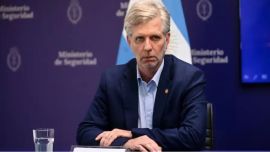

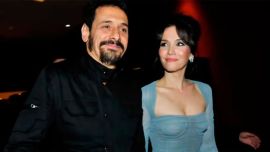



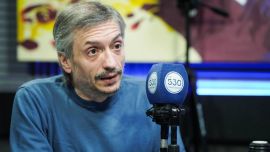


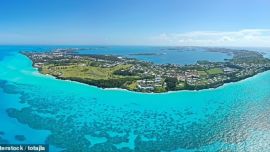
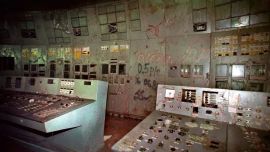
Comments